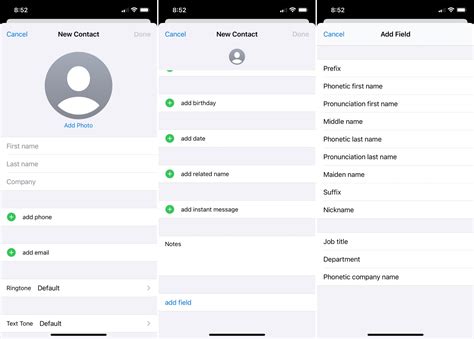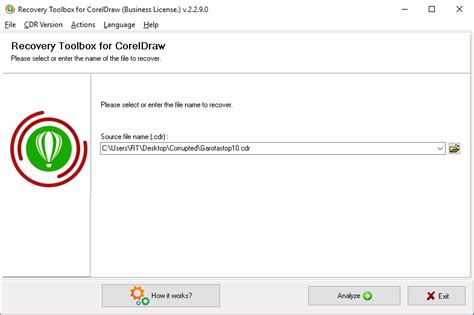Download Microsoft App V
Author: s | 2025-04-24

Downloadable App-V technical documentation. Microsoft Application Virtualization (App-V) Documentation Resources Download Page Download Center; Microsoft

Microsoft App-V (Microsoft Application
Skip to main content This browser is no longer supported. Upgrade to Microsoft Edge to take advantage of the latest features, security updates, and technical support. Download Microsoft Edge More info about Internet Explorer and Microsoft Edge Read in English Read in English Share via Deploying App-V packages by using electronic software distribution (ESD) Article 09/27/2018 In this article -->Applies to:Windows 10Windows 11You can deploy App-V packages using an electronic software distribution (ESD) solution. For information about planning to deploy App-V packages with an ESD, see Planning to deploy App-V with an electronic software distribution system.To learn how to deploy App-V packages with Microsoft System Center 2012 Configuration Manager, see Introduction to application management in Configuration ManagerHow to deploy virtualized packages using an ESDTo learn more about how to deploy virtualized packages using an ESD, see How to deploy App-V packages using electronic software distribution.How to enable only administrators to publish packages by using an ESDTo learn how to configure the App-V client to enable only administrators to publish and unpublish packages when you’re using an ESD, see How to enable only administrators to publish packages by using an ESD.Related articlesApp-V and Citrix integrationOperations for App-V --> Additional resources In this article Downloadable App-V technical documentation. Microsoft Application Virtualization (App-V) Documentation Resources Download Page Download Center; Microsoft Downloadable App-V technical documentation. Skip to main content. Microsoft. Download Center Download the Copilot app. Microsoft Application Virtualization (App-V) Documentation This multi-string value (and their children) will be treated as pass-through.The following locations are configured as pass-through locations by default:HKEY_CURRENT_USER\SOFTWARE\Classes\Local Settings\Software\Microsoft\Windows\CurrentVersion\AppModelHKEY_LOCAL_MACHINE\SOFTWARE\Classes\Local Settings\Software\Microsoft\Windows\CurrentVersion\AppModelHKEY_LOCAL_MACHINE\SOFTWARE\Microsoft\Windows\CurrentVersion\WINEVTHKEY_LOCAL_MACHINE\SYSTEM\CurrentControlSet\services\eventlog\ApplicationHKEY_LOCAL_MACHINE\SYSTEM\CurrentControlSet\Control\WMI\AutologgerHKEY_CURRENT_USER\SOFTWARE\Microsoft\Windows\CurrentVersion\Internet SettingsHKEY_LOCAL_MACHINE\SOFTWARE\Microsoft\Windows NT\CurrentVersion\PerflibHKEY_LOCAL_MACHINE\SOFTWARE\PoliciesHKEY_CURRENT_USER\SOFTWARE\PoliciesThe purpose of pass-through keys is to ensure that a virtual application doesn't write registry data in the VReg that is required for non-virtual applications for successful operation or integration. The Policies key ensures that Group Policy-based settings set by the administrator are utilized and not per package settings. The AppModel key is required for integration with Windows Modern UI-based applications. Administers ideally shouldn't modify any of the default pass-through keys, but in some instances, the admin may need to add more pass-through keys to adjust application behavior.App-V package store behaviorApp-V manages the Package Store, which is the location where the expanded asset files from the appv file are stored. By default, this location is stored at %ProgramData%\App-V, and is limited in terms of storage capabilities only by free disk space. The package store is organized by the GUIDs for the package and version as mentioned in the previous section.Add packagesApp-V Packages are staged upon addition to the computer with the App-V Client. The App-V Client provides on-demand staging. When publishing or manually entering the Add-AppVClientPackage cmdlet, the data structure is built in the package store (C:\programdata\App-V\{PkgGUID}\{VerGUID}). The package files identified in the publishing block defined in the StreamMap.xml file are added to the system, and the top level folders and child files are staged to ensure proper application assets exist at launch.Mounting packagesPackages can be explicitly loaded by entering the Mount-AppVClientPackage PowerShell cmdlet or by using the App-V Client UI to download a package. This operation completely loads the entire package into the package store.Streaming packagesThe App-V Client can be configured to change the default behavior of streaming. All streaming policies are stored under the followingComments
Skip to main content This browser is no longer supported. Upgrade to Microsoft Edge to take advantage of the latest features, security updates, and technical support. Download Microsoft Edge More info about Internet Explorer and Microsoft Edge Read in English Read in English Share via Deploying App-V packages by using electronic software distribution (ESD) Article 09/27/2018 In this article -->Applies to:Windows 10Windows 11You can deploy App-V packages using an electronic software distribution (ESD) solution. For information about planning to deploy App-V packages with an ESD, see Planning to deploy App-V with an electronic software distribution system.To learn how to deploy App-V packages with Microsoft System Center 2012 Configuration Manager, see Introduction to application management in Configuration ManagerHow to deploy virtualized packages using an ESDTo learn more about how to deploy virtualized packages using an ESD, see How to deploy App-V packages using electronic software distribution.How to enable only administrators to publish packages by using an ESDTo learn how to configure the App-V client to enable only administrators to publish and unpublish packages when you’re using an ESD, see How to enable only administrators to publish packages by using an ESD.Related articlesApp-V and Citrix integrationOperations for App-V --> Additional resources In this article
2025-03-25This multi-string value (and their children) will be treated as pass-through.The following locations are configured as pass-through locations by default:HKEY_CURRENT_USER\SOFTWARE\Classes\Local Settings\Software\Microsoft\Windows\CurrentVersion\AppModelHKEY_LOCAL_MACHINE\SOFTWARE\Classes\Local Settings\Software\Microsoft\Windows\CurrentVersion\AppModelHKEY_LOCAL_MACHINE\SOFTWARE\Microsoft\Windows\CurrentVersion\WINEVTHKEY_LOCAL_MACHINE\SYSTEM\CurrentControlSet\services\eventlog\ApplicationHKEY_LOCAL_MACHINE\SYSTEM\CurrentControlSet\Control\WMI\AutologgerHKEY_CURRENT_USER\SOFTWARE\Microsoft\Windows\CurrentVersion\Internet SettingsHKEY_LOCAL_MACHINE\SOFTWARE\Microsoft\Windows NT\CurrentVersion\PerflibHKEY_LOCAL_MACHINE\SOFTWARE\PoliciesHKEY_CURRENT_USER\SOFTWARE\PoliciesThe purpose of pass-through keys is to ensure that a virtual application doesn't write registry data in the VReg that is required for non-virtual applications for successful operation or integration. The Policies key ensures that Group Policy-based settings set by the administrator are utilized and not per package settings. The AppModel key is required for integration with Windows Modern UI-based applications. Administers ideally shouldn't modify any of the default pass-through keys, but in some instances, the admin may need to add more pass-through keys to adjust application behavior.App-V package store behaviorApp-V manages the Package Store, which is the location where the expanded asset files from the appv file are stored. By default, this location is stored at %ProgramData%\App-V, and is limited in terms of storage capabilities only by free disk space. The package store is organized by the GUIDs for the package and version as mentioned in the previous section.Add packagesApp-V Packages are staged upon addition to the computer with the App-V Client. The App-V Client provides on-demand staging. When publishing or manually entering the Add-AppVClientPackage cmdlet, the data structure is built in the package store (C:\programdata\App-V\{PkgGUID}\{VerGUID}). The package files identified in the publishing block defined in the StreamMap.xml file are added to the system, and the top level folders and child files are staged to ensure proper application assets exist at launch.Mounting packagesPackages can be explicitly loaded by entering the Mount-AppVClientPackage PowerShell cmdlet or by using the App-V Client UI to download a package. This operation completely loads the entire package into the package store.Streaming packagesThe App-V Client can be configured to change the default behavior of streaming. All streaming policies are stored under the following
2025-04-15Packages.- Delete the following user-Virtual File System (VFS) entries.AppData\Local\Microsoft\AppV\Client\VFSAppData\Roaming\Microsoft\AppV\Client\VFS- Install the Hotfix Package 4 for Application Virtualization 5.0 SP2 client version of the client.- Install UE-V and download the App-V Settings Template from the UE-V template Gallery, see the following steps.- Configure for Shared Content Store (SCS) mode. For more information, see How to Install the App-V 5.0 Client for Shared Content Store Mode.- Configure Preserve User Integrations on Login Registry DWORD.- Preconfigure all global-targeted packages, for example, Add-AppvClientPackage.- Preconfigure all global-targeted connection groups, for example, Add-AppvClientConnectionGroup.- Prepublish all global-targeted packages.ConfigurationsFor critical App-V Client configurations and for a little more context and how-to, review the following information:Shared Content Store (SCS) ModeConfigurable in PowerShell using Set-AppvClientConfiguration -SharedContentStoreMode, orDuring installation of the App-V 5.0 client.When running the shared content store only publishing data is maintained on the hard disk; other virtual application assets are maintained in memory (RAM). This helps to conserve local storage and minimize disk I/O per second (IOPS).This is recommended when low-latency connections are available between the App-V Client endpoint and the SCS content server, SAN.PreserveUserIntegrationsOnLoginConfigure in the Registry under HKEY_LOCAL_MACHINE\Software\Microsoft\AppV\Client\Integration.Create the DWORD value PreserveUserIntegrationsOnLogin with a value of 1.Restart the App-V client service or restart the computer running the App-V Client.If you haven't preconfigured (Add-AppvClientPackage) a specific package and this setting isn't configured, the App-V Client deintegrates the persisted user integrations, then reintegrate. For every package that meets the above conditions, effectively twice the work is done during publishing/refresh.If you don't plan to preconfigure every available user package in the base image, use this setting.MaxConcurrentPublishingRefreshConfigure in the Registry under HKEY_LOCAL_MACHINE\Software\Microsoft\AppV\Client\Publishing.Create the DWORD value MaxConcurrentPublishingRefresh with the desired maximum number of concurrent publishing refreshes.The App-V client service and computer don't need to be restarted.This setting determines the number of users that can perform a publishing refresh/sync at the same time. The default setting is no limit.Limiting the number of concurrent publishing refreshes prevents excessive CPU usage that could impact computer performance. This limit is recommended in an RDS environment, where multiple users can sign in to the same computer at the same time and perform a publishing refresh sync. If the concurrent publishing refresh threshold is reached, the time required to publish new applications and make them available to end users after they sign in could take an indeterminate amount of time.Configure UE-V solution for App-V ApproachWe recommend using Microsoft User Experience Virtualization (UE-V) to capture and centralize application settings and Windows operating system settings for a specific user. These settings are then applied to the different computers that are accessed by the user, including desktop computers, laptop computers, and virtual desktop infrastructure (VDI) sessions. UE-V is optimized for RDS and VDI scenarios.NoteWithout performing an additional configuration step, the
2025-04-04